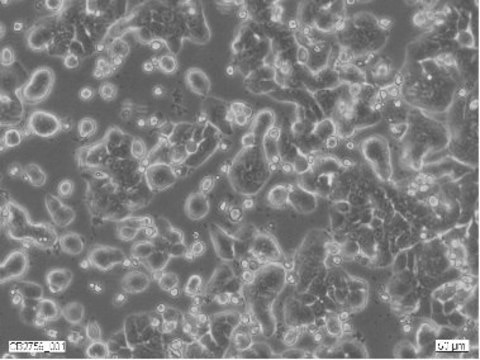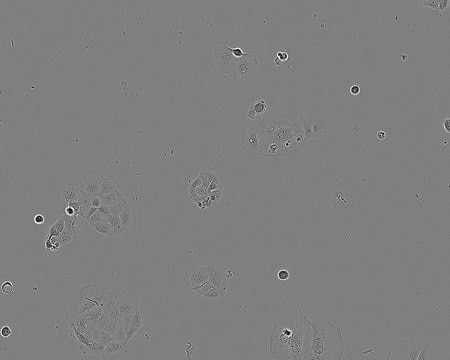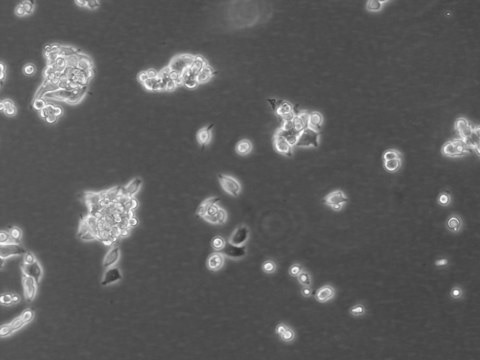Recommended Products
biological source
human colon (lung metastasis)
description
Human colon carcinoma
growth mode
Adherent
karyotype
2n = 46, modal no. 56
morphology
Epithelial
products
Not specified
receptors
Not specified
technique(s)
cell culture | mammalian: suitable
relevant disease(s)
metastasis
shipped in
dry ice
storage temp.
−196°C
Related Categories
Cell Line Origin
Human colon carcinoma
Cell Line Description
Derived from a lung metastasis of colon carcinoma in a 72 year old male. Tumour tissue was inoculated sub-cutaneously and serially transplanted in BALB/c nude mice and subsequently established in in vitro culture. The histological characteristics of the tumour were maintained throughout the transplantation procedure. They have receptors for a range of peptide hormones and neurotransmitters. The cells grow as monolayers, exhibit tight junctions and desmosomes between adjacent cells.
Application
Human T84 cell line has been used for comparative genome analysis of Salmonella enterica serovar Typhimurium definitive type 2 (DT2) isolate 94-213 and S. Typhimurium isolates SL1344, DT104 and D23580. The ability of these isolates to invade culture medium has also been studied. It has also been used to construct and study the suitability of an in vitro model to study chemotherapy-induced mucosal damage.
Tumourigenicity, neurotransmitter and hormone studies
Culture Medium
Ham′s F12 + DMEM (1:1) + 2mM Glutamine + 10% Foetal Bovine Serum (FBS).
Subculture Routine
Split sub-confluent cultures (70-80%) 1:2 - 1:4 i.e. seeding at 1-3 x 10,000 cells / cm2 using 0.25% trypsin or trypsin/EDTA; 5% CO2; 37°C. Cells grow slowly and may not form a complete monolayer, maintain at high density with a minimum of 25% confluency.
Other Notes
Additional freight & handling charges may be applicable for Asia-Pacific shipments. Please check with your local Customer Service representative for more information.
Certificates of Analysis (COA)
Search for Certificates of Analysis (COA) by entering the products Lot/Batch Number. Lot and Batch Numbers can be found on a product’s label following the words ‘Lot’ or ‘Batch’.
Already Own This Product?
Find documentation for the products that you have recently purchased in the Document Library.
Our team of scientists has experience in all areas of research including Life Science, Material Science, Chemical Synthesis, Chromatography, Analytical and many others.
Contact Technical Service


